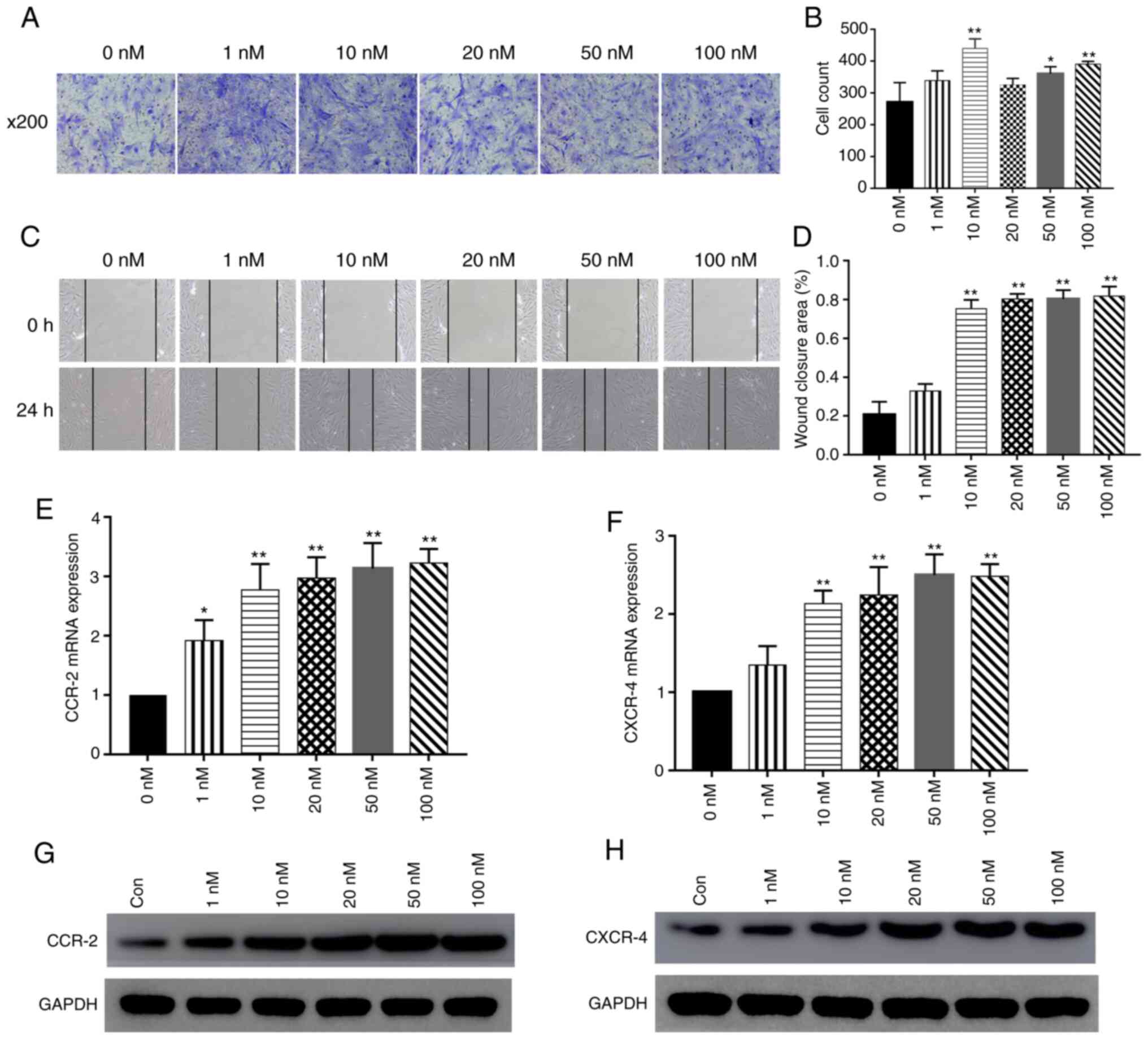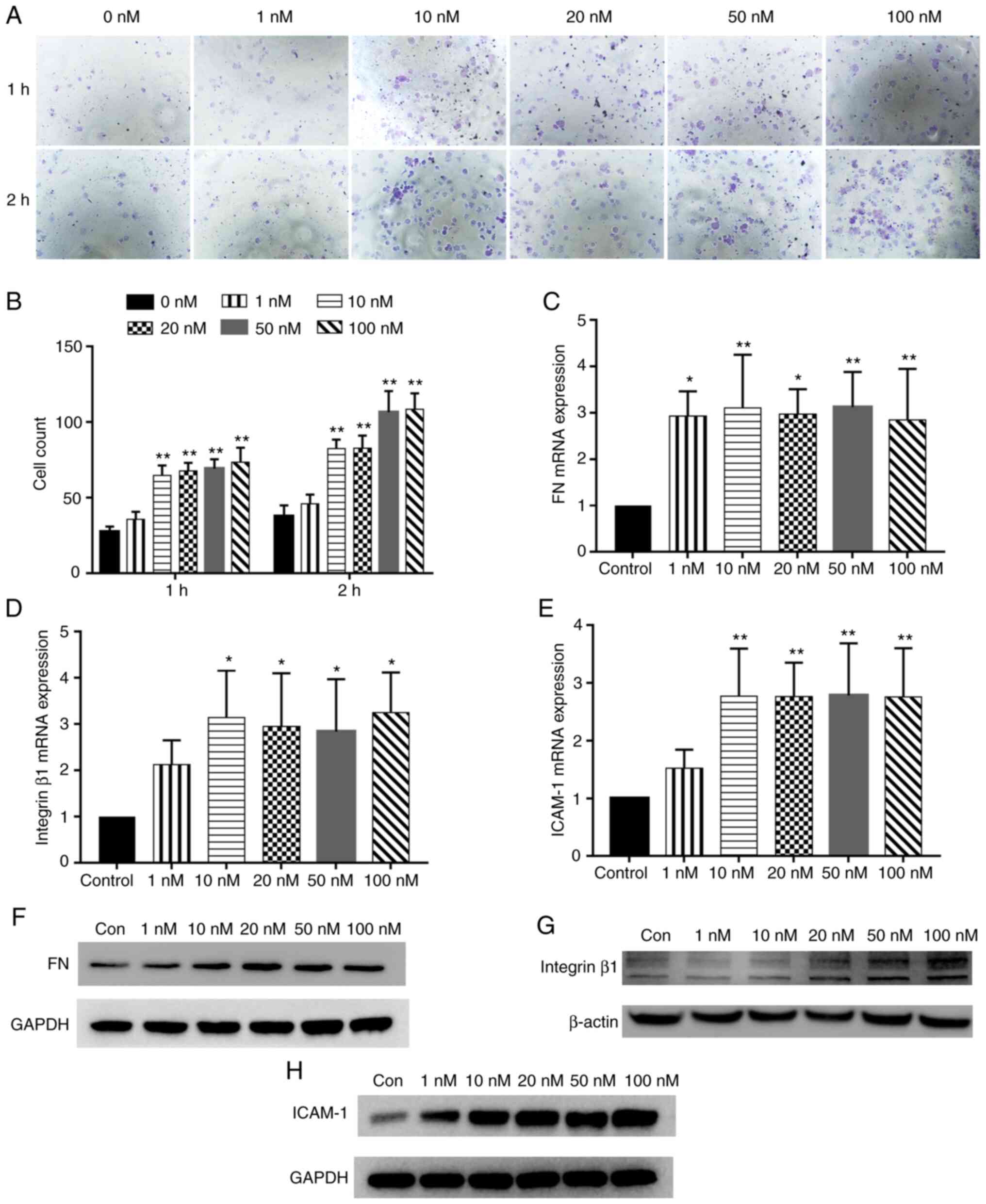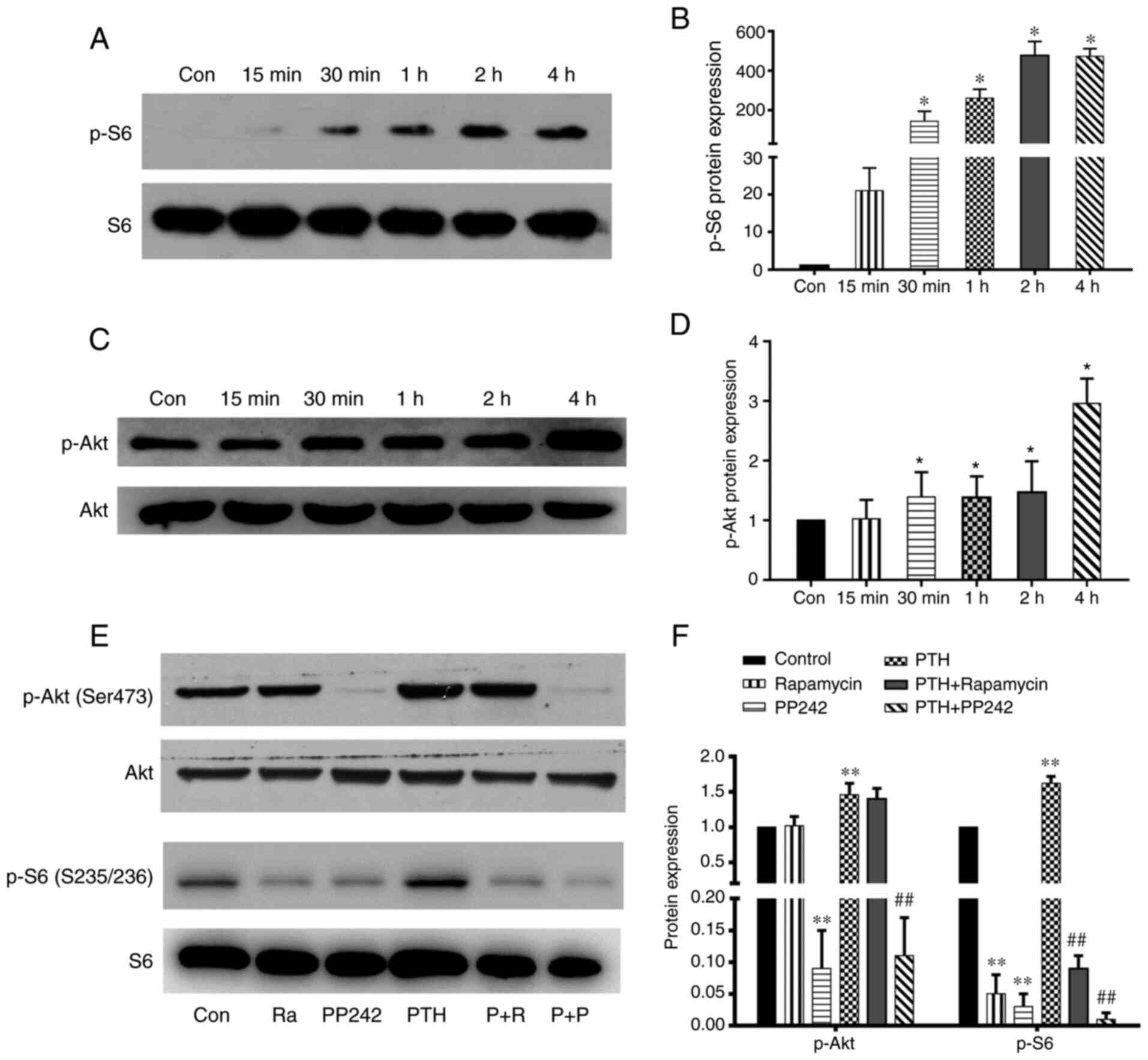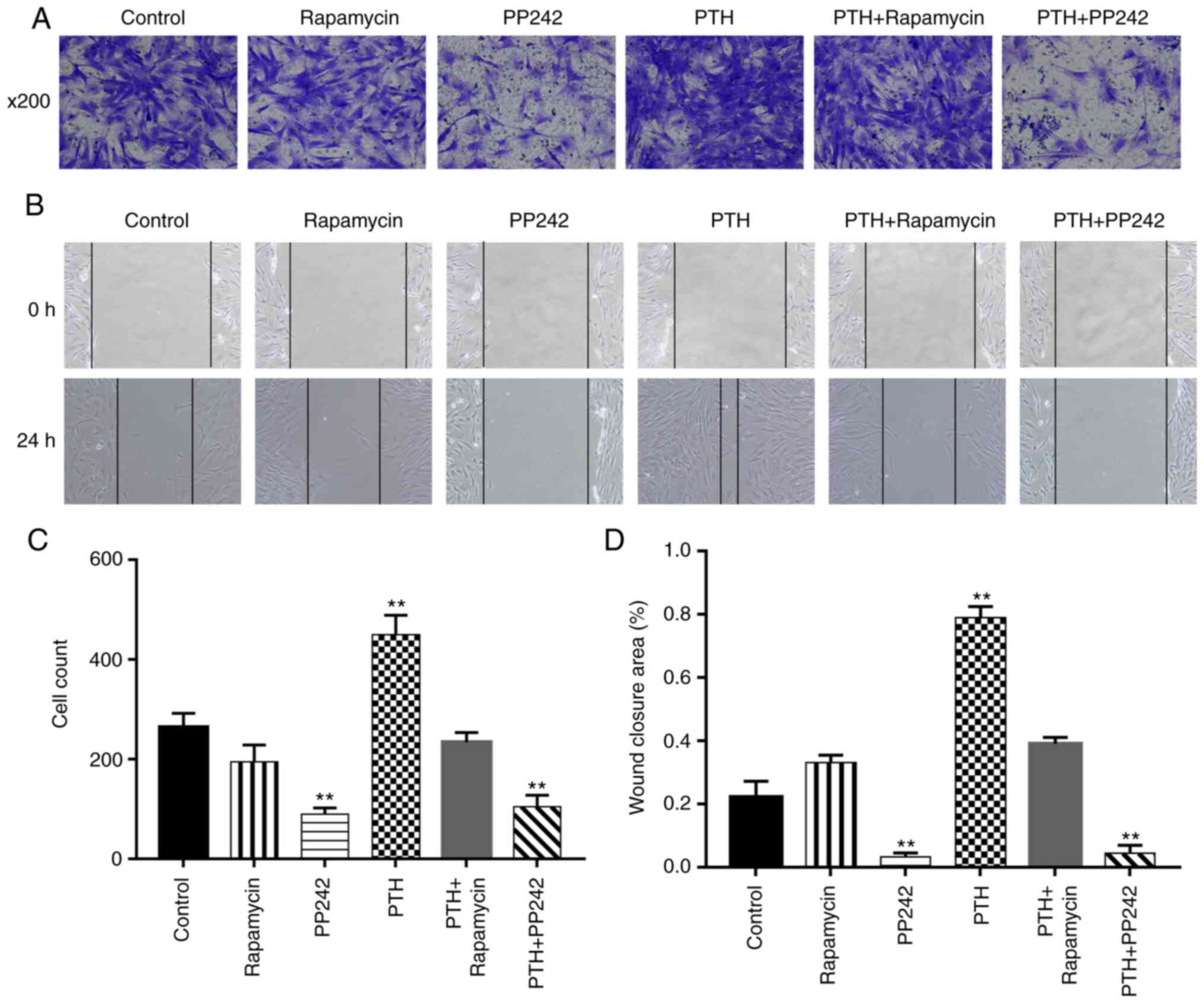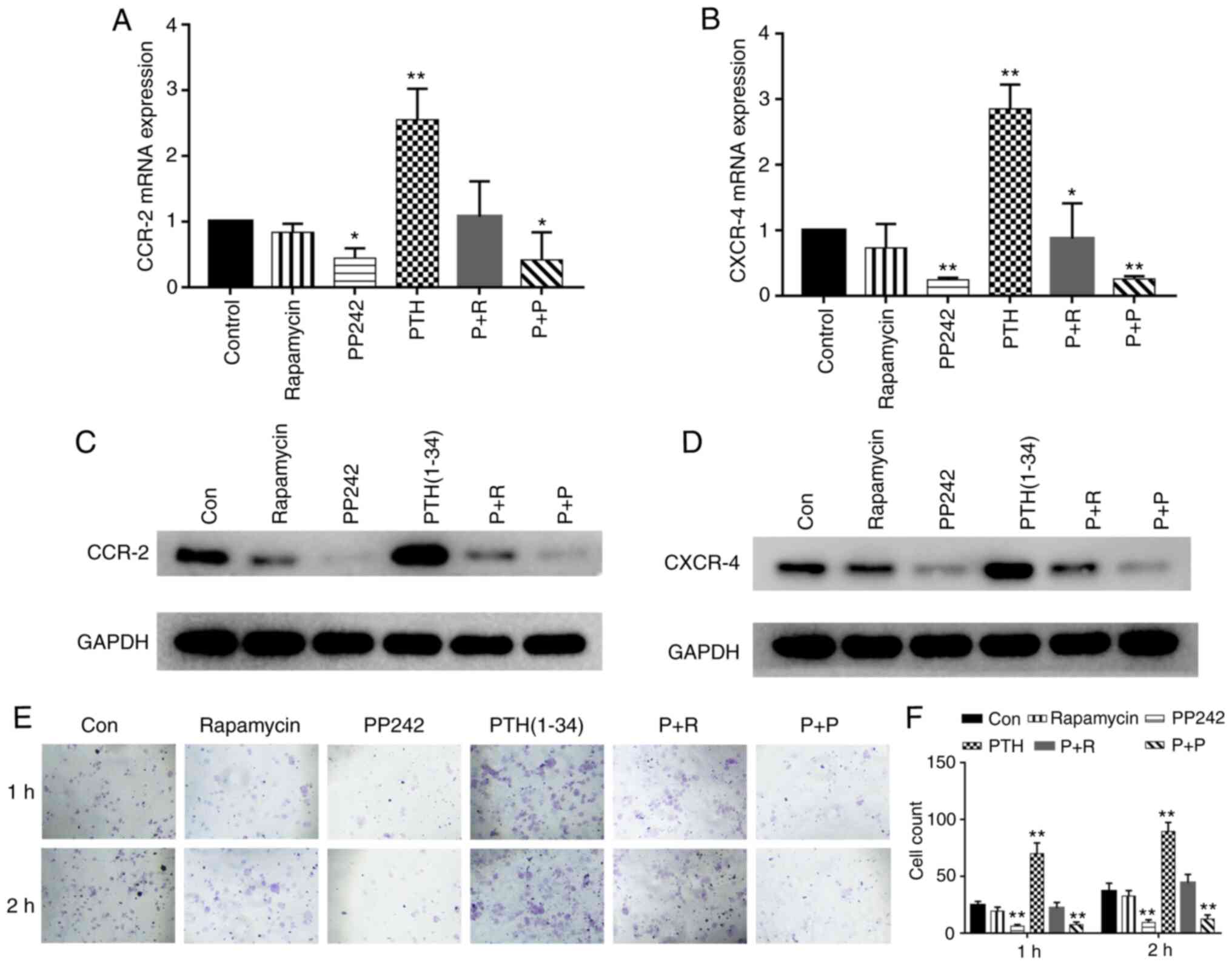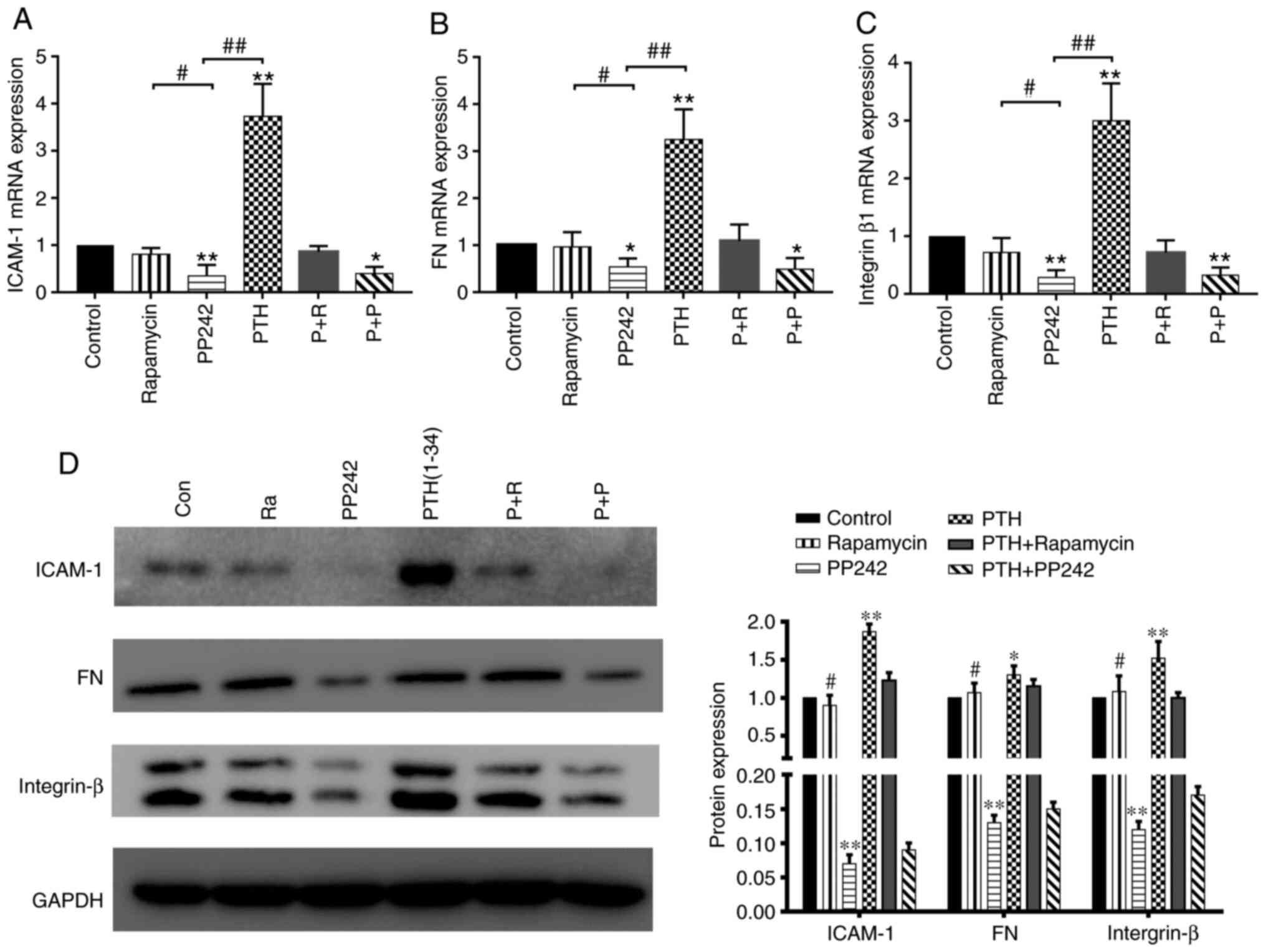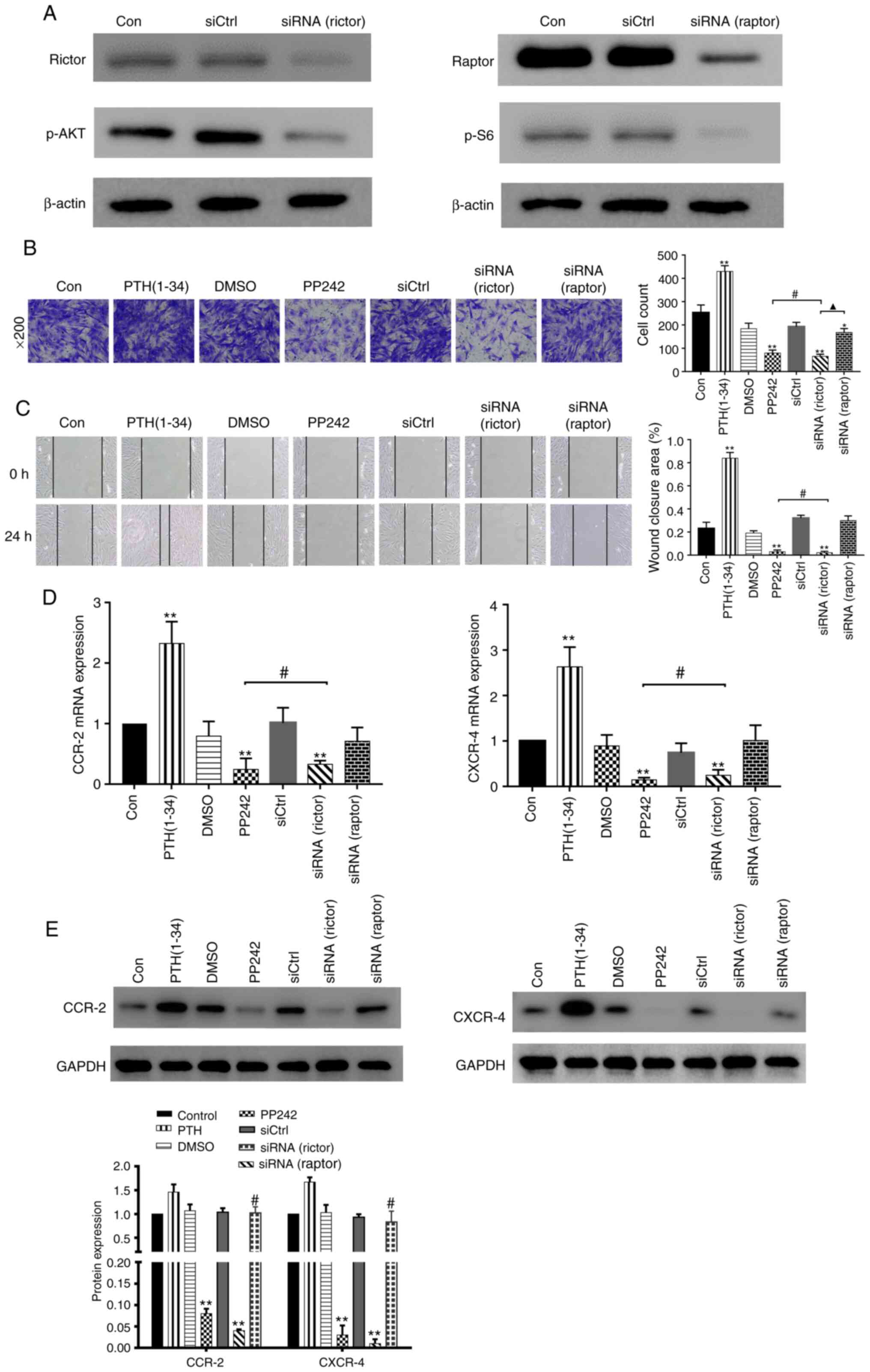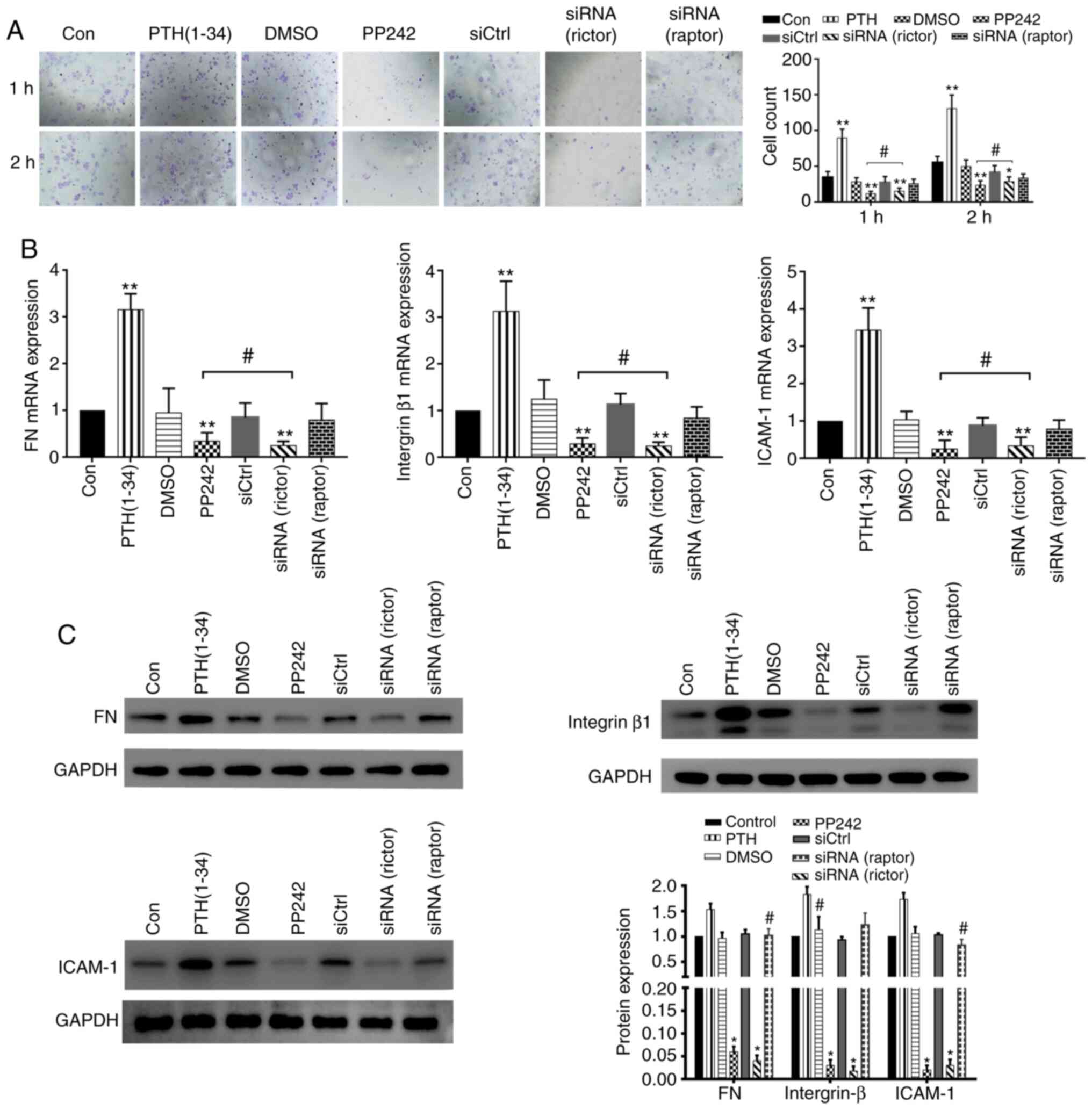|
1
|
Ponnusamy KE, Iyer S, Gupta G and Khanna
AJ: Instrumentation of the osteoporotic spine: Biomechanical and
clinical consider-ations. Spine J. 11:54–63. 2011. View Article : Google Scholar
|
|
2
|
Dvorak G, Arnhart S, Heuberer C, Huber G,
Watzek R and Gruber R: Peri-implantitis and late implant failures
in postmenopausal women: A cross-sectional study. J Clin
Periodontol. 38:950–955. 2011. View Article : Google Scholar : PubMed/NCBI
|
|
3
|
Cameron P, Travers C, Chander T, Buckland
C, Campion B and Noble B: Directed osteogenic differentiation of
human mesen-chymal stem/precursor cells on silicate substituted
calcium phosphate. J Biomed Mater Res A. 101:13–22. 2013.
View Article : Google Scholar
|
|
4
|
Mavrogenis AF, Dimitriou R, Parvizi J and
Babis GC: Biology of implant osseointegration. J Musculoskelet
Neuronal Interact. 9:61–71. 2009.PubMed/NCBI
|
|
5
|
Davies JE: Understanding peri-implant
endosseous healing. J Dent Educ. 67:932–949. 2003. View Article : Google Scholar : PubMed/NCBI
|
|
6
|
Olivares-Navarrete R, Hyzy SL, Hutton DL,
Erdman CP, Wieland M, Boyan BD and Schwartz Z: Direct and indirect
effects of microstructured titanium substrates on the induction of
mesenchymal stem cell differentiation towards the osteoblast
lineage. Biomaterials. 31:2728–2735. 2010. View Article : Google Scholar : PubMed/NCBI
|
|
7
|
Puleo DA and Nanci A: Understanding and
controlling the bone-implant interface. Biomaterials. 20:2311–2321.
1999. View Article : Google Scholar : PubMed/NCBI
|
|
8
|
Özdal-Kurt F, Tuğlu I, Vatansever HS, Tong
S, Şen BH and Deliloğlu-Gürhan SI: The effect of different implant
biomaterials on the behavior of canine bone marrow stromal cells
during their differentiation into osteoblasts. Biotech Histochem.
91:412–422. 2016. View Article : Google Scholar : PubMed/NCBI
|
|
9
|
Kaback LA, Soung DY, Naik A, Geneau G,
Schwarz EM, Rosier RN, O'Keefe RJ and Drissi H: Teriparatide (1-34
human PTH) regulation of osterix during fracture repair. J Cell
Biochem. 105:219–226. 2008. View Article : Google Scholar : PubMed/NCBI
|
|
10
|
Jiang L, Zhang W, Wei L, Zhou Q, Yang G,
Qian N, Tang Y, Gao Y and Jiang X: Early effects of parathyroid
hormone on vascularized bone regeneration and implant
osseointegration in aged rats. Biomaterials. 179:15–28. 2018.
View Article : Google Scholar : PubMed/NCBI
|
|
11
|
Ohkawa Y, Tokunaga K and Endo N:
Intermittent administration of human parathyroid hormone (1-34)
increases new bone formation on the interface of
hydroxyapatitecoated titanium rods implanted into ovariectomized
rat femora. J Orthop Sci. 13:533–542. 2008. View Article : Google Scholar : PubMed/NCBI
|
|
12
|
Du L, Feng R and Ge S: PTH/SDF-1α
cotherapy promotes proliferation, migration and osteogenic
differentiation of human periodontal ligament stem cells. Cell
Prolif. 49:599–608. 2016. View Article : Google Scholar : PubMed/NCBI
|
|
13
|
Sengupta S, Peterson TR and Sabatini DM:
Regulation of the mTOR complex 1 pathway by nutrients, growth
factors, and stress. Mol Cell. 40:310–322. 2010. View Article : Google Scholar : PubMed/NCBI
|
|
14
|
Zoncu R, Efeyan A and Sabatini DM: mTOR:
From growth signal integration to cancer, diabetes and ageing. Nat
Rev Mol Cell Biol. 12:21–35. 2011. View Article : Google Scholar
|
|
15
|
Diz-Muñoz A, Thurley K, Chintamen S,
Altschuler SJ, Wu LF, Fletcher DA and Weiner OD: Membrane tension
acts through PLD2 and mTORC2 to limit actin network assembly during
neutrophil migration. PLoS Biol. 14:e10024742016. View Article : Google Scholar : PubMed/NCBI
|
|
16
|
Wang H, Shao X, He Q, Wang C, Xia L, Yue
D, Qin G, Jia C and Chen R: Quantitative proteomics implicates
rictor/mTORC2 in cell adhesion. J Proteome Res. 17:3360–3369. 2018.
View Article : Google Scholar : PubMed/NCBI
|
|
17
|
Huang L, Zhang Y, Xu C, Gu X, Niu L, Wang
J, Sun X, Bai X, Xuan X, Li Q, et al: Rictor positively regulates B
cell receptor signaling by modulating actin reorganization via
ezrin. PLoS Biol. 15:e20017502017. View Article : Google Scholar : PubMed/NCBI
|
|
18
|
Sarbassov DD, Ali SM, Kim DH, Guertin DA,
Latek RA, Erdjument-Bromage H, Tempst P and Sabatini DM: Rictor, a
novel binding partner of mTOR, defines a rapamycin-insensitive and
raptor-independent pathway that regulates the cytoskeleton. Curr
Biol. 14:1296–1302. 2004. View Article : Google Scholar : PubMed/NCBI
|
|
19
|
Sen B, Xie Z, Case N, Thompson WR, Uze G,
Styner M and Rubin J: mTORC2 regulates mechanically induced
cytoskeletal reorganization and lineage selection in marrow-derived
mesenchymal stem cells. J Bone Miner Res. 29:78–89. 2014.
View Article : Google Scholar
|
|
20
|
Gulhati P, Bowen KA, Liu J, Stevens PD,
Rychahou PG, Chen M, Lee EY, Weiss HL, O'Connor KL, Gao T and Evers
BM: mTORC1 and mTORC2 regulate EMT, motility, and metastasis of
colorectal cancer via RhoA and Rac1 signaling pathways. Cancer Res.
71:3246–3256. 2011. View Article : Google Scholar : PubMed/NCBI
|
|
21
|
Wang X, Lai P, Zhang Z, Huang M, Wang L,
Yin M, Jin D, Zhou R and Bai X: Targeted inhibition of mTORC2
prevents osteosarcoma cell migration and promotes apoptosis. Oncol
Rep. 32:382–388. 2014. View Article : Google Scholar : PubMed/NCBI
|
|
22
|
Hau AM, Leivo MZ, Gilder AS, Hu JJ, Gonias
SL and Hansel DE: mTORC2 activation is regulated by the urokinase
receptor (uPAR) in bladder cancer. Cell Signal. 29:96–106. 2017.
View Article : Google Scholar
|
|
23
|
Maniatopoulos C, Sodek J and Melcher AH:
Bone formation in vitro by stromal cells obtained from bone marrow
of young adult rats. Cell Tissue Res. 254:317–330. 1988. View Article : Google Scholar : PubMed/NCBI
|
|
24
|
Smajilagić A, Aljičević M, Redžić A,
Filipović S and Lagumdžija A: Rat bone marrow stem cells isolation
and culture as a bone formative experimental system. Bosn J Basic
Med Sci. 13:27–30. 2013. View Article : Google Scholar
|
|
25
|
Livak KJ and Schmittgen TD: Analysis of
relative gene expres-sion data using real-time quantitative PCR and
the 2(-Delta Delta C(T)) method. Methods. 25:402–408. 2001.
View Article : Google Scholar
|
|
26
|
Alghamdi HS, Bosco R, Both SK, Iafisco M,
Leeuwenburgh SC, Jansen JA and van den Beucken JJ: Synergistic
effects of bisphos-phonate and calcium phosphate nanoparticles on
peri-implant bone responses in osteoporotic rats. Biomaterials.
35:5482–5490. 2014. View Article : Google Scholar : PubMed/NCBI
|
|
27
|
Zhu D, Su Y, Young ML, Ma J, Zheng Y and
Tang L: Biological responses and mechanisms of human bone marrow
mesenchymal stem cells to Zn and Mg biomaterials. ACS Appl Mater
Interfaces. 9:27453–27461. 2017. View Article : Google Scholar : PubMed/NCBI
|
|
28
|
Petrie TA, Raynor JE, Dumbauld DW, Lee TT,
Jagtap S, Templeman KL, Collard DM and Garcia AJ: Multivalent
integrin-specific ligands enhance tissue healing and biomaterial
integration. Sci Transl Med. 2:45r–60r. 2010. View Article : Google Scholar
|
|
29
|
Misof BM, Roschger P, Dempster DW, Zhou H,
Bilezikian JP, Klaushofer K and Rubin MR: PTH(1-84) administration
in hypo-parathyroidism transiently reduces bone matrix
mineralization. J Bone Miner Res. 31:180–189. 2016. View Article : Google Scholar
|
|
30
|
Morgan EF, Mason ZD, Bishop G, Davis AD,
Wigner NA, Gerstenfeld LC and Einhorn TA: Combined effects of
recombi-nant human BMP-7 (rhBMP-7) and parathyroid hormone (1-34)
in metaphyseal bone healing. Bone. 43:1031–1038. 2008. View Article : Google Scholar : PubMed/NCBI
|
|
31
|
Sheyn D, Shapiro G, Tawackoli W, Jun DS,
Koh Y, Kang KB, Su S, Da X, Ben-David S, Bez M, et al: PTH induces
systemically administered mesenchymal stem cells to migrate to and
regenerate spine injuries. Mol Ther. 24:318–330. 2016. View Article : Google Scholar :
|
|
32
|
Kitaori T, Ito H, Schwarz ME, Tsutsumi R,
Yoshitomi H, Oishi S, Nakano M, Fujii N, Nagasawa T and Nakamura T:
Stromal cell-derived factor 1/CXCR4 signaling is critical for the
recruitment of mesenchymal stem cells to the fracture site during
skeletal repair in a mouse model. Arthritis Rheum. 60:813–823.
2009. View Article : Google Scholar : PubMed/NCBI
|
|
33
|
Wang LL, Chen D, Lee J, Gu X, Alaaeddine
G, Li J, Wei L and Yu SP: Mobilization of endogenous bone marrow
derived endothelial progenitor cells and therapeutic potential of
parathyroid hormone after ischemic stroke in mice. PLoS One.
9:e872842014. View Article : Google Scholar : PubMed/NCBI
|
|
34
|
Ryan CM, Brown JA, Bourke E, Prendergast
M, Kavanagh C, Liu Z, Owens P, Shaw G, Kolch W, O'Brien T and Barry
FP: ROCK activity and the Gβg complex mediate chemotactic migration
of mouse bone marrow-derived stromal cells. Stem Cell Res Ther.
6:1362015. View Article : Google Scholar
|
|
35
|
Yang L, Froio RM, Sciuto TE, Dvorak AM,
Alon R and Luscinskas W: ICAM-1 regulates neutrophil adhesion and
trans-cellular migration of TNF-alpha-activated vascular
endothelium under flow. Blood. 106:584–592. 2005. View Article : Google Scholar : PubMed/NCBI
|
|
36
|
Pendegrass CJ, El-Husseiny M and Blunn GW:
The development of fibronectin-functionalised hydroxyapatite
coatings to improve dermal fibroblast attachment in vitro. J Bone
Joint Surg Br. 94:564–569. 2012. View Article : Google Scholar : PubMed/NCBI
|
|
37
|
Davies T and Chambers TJ: Parathyroid
hormone activates adhesion in bone marrow stromal precursor cells.
J Endocrinol. 180:505–513. 2004. View Article : Google Scholar : PubMed/NCBI
|
|
38
|
Lee DJ, Southgate RD, Farhat YM, Loiselle
AE, Hammert WC, Awad HA and O'Keefe RJ: Parathyroid hormone 1-34
enhances extracellular matrix deposition and organization during
flexor tendon repair. J Orthop Res. 33:17–24. 2015. View Article : Google Scholar
|
|
39
|
Okada Y, Morimoto I, Ura K, Watanabe K,
Eto S, Kumegawa M, Raisz L, Pilbeam C and Tanaka Y: Cell-to-cell
adhesion via inter-cellular adhesion molecule-1 and leukocyte
function-associated antigen-1 pathway is involved in
1alpha,25(OH)2D3, PTH and IL-1alpha-induced osteoclast
differentiation and bone resorption. Endocr J. 49:483–495. 2002.
View Article : Google Scholar : PubMed/NCBI
|
|
40
|
Yin Y, Hua H, Li M, Liu S, Kong Q, Shao T,
Wang J, Luo Y, Wang Q, Luo T and Jiang Y: mTORC2 promotes type I
insulin-like growth factor receptor and insulin receptor activation
through the tyrosine kinase activity of mTOR. Cell Res. 26:46–65.
2016. View Article : Google Scholar :
|
|
41
|
Chantaravisoot N, Wongkongkathep P, Loo
JA, Mischel PS and Tamanoi F: Significance of filamin A in mTORC2
function in glioblastoma. Mol Cancer. 14:1272015. View Article : Google Scholar : PubMed/NCBI
|
|
42
|
Rosner M and Hengstschläger M: Cytoplasmic
and nuclear distribution of the protein complexes mTORC1 and
mTORC2: Rapamycin triggers dephosphorylation and delocalization of
the mTORC2 components rictor and sin1. Hum Mol Genet. 17:2934–2948.
2008. View Article : Google Scholar : PubMed/NCBI
|
|
43
|
Akcakanat A, Singh G, Hung MC and
Meric-Bernstam F: Rapamycin regulates the phosphorylation of
rictor. Biochem Biophys Res Commun. 362:330–333. 2007. View Article : Google Scholar : PubMed/NCBI
|
|
44
|
Wang C, Qin L, Manes TD, Kirkiles-Smith
NC, Tellides G and Pober JS: Rapamycin antagonizes TNF induction of
VCAM-1 on endothelial cells by inhibiting mTORC2. J Exp Med.
211:395–404. 2014. View Article : Google Scholar : PubMed/NCBI
|
|
45
|
Lamming DW, Ye L, Katajisto P, Goncalves
MD, Saitoh M, Stevens DM, Davis JG, Salmon AB, Richardson A, Ahima
R, et al: Rapamycin-induced insulin resistance is mediated by
mTORC2 loss and uncoupled from longevity. Science. 335:1638–1643.
2012. View Article : Google Scholar : PubMed/NCBI
|















